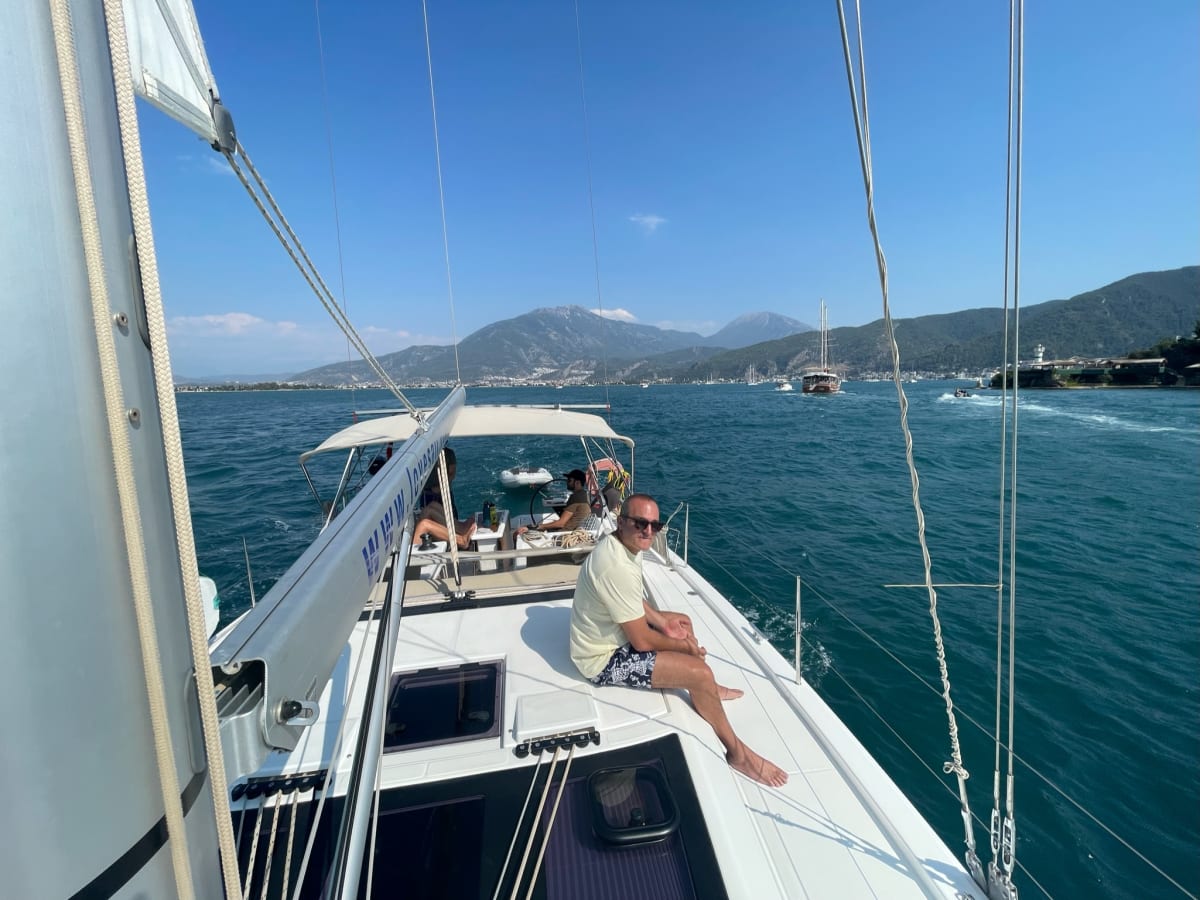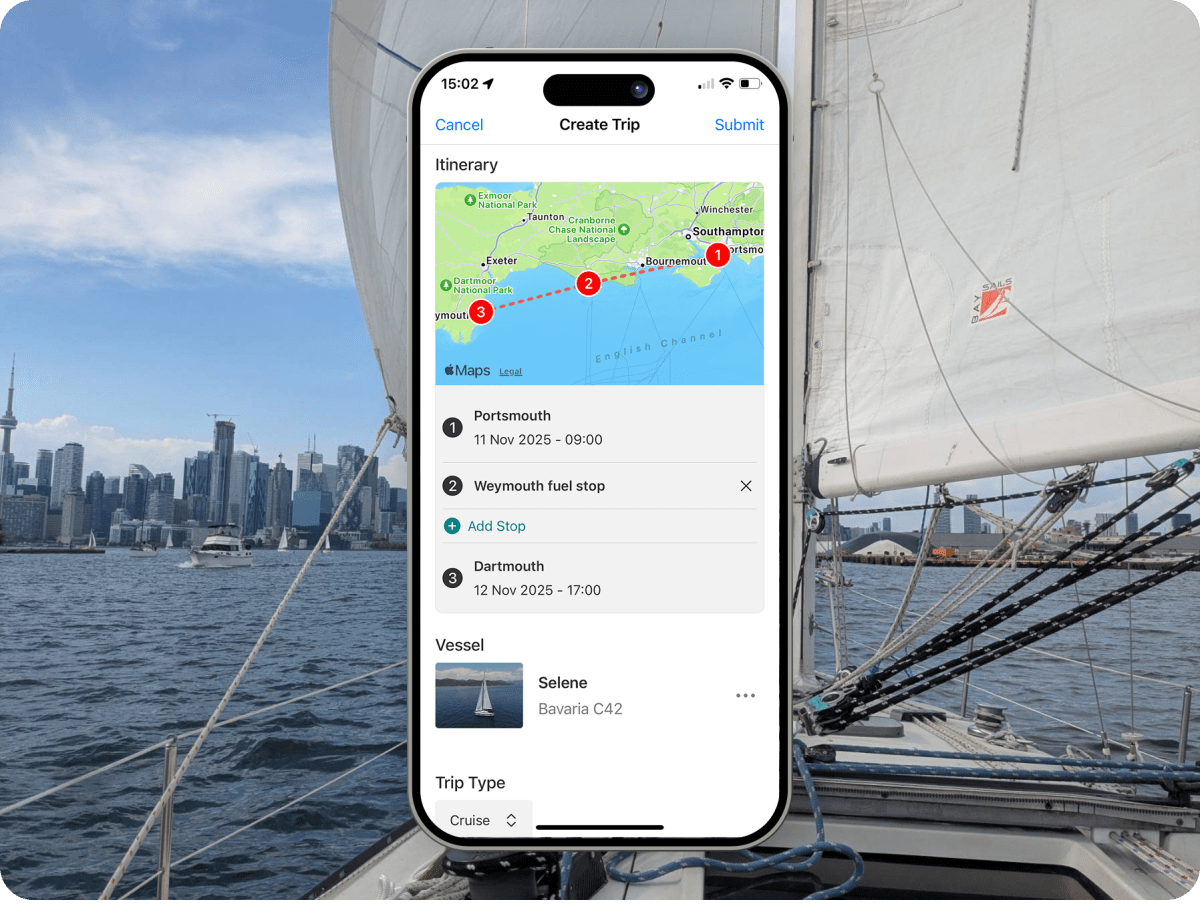How to Plan a Sailing Route: A Practical Guide for Safe and Enjoyable Voyages
Updated: Nov 11, 2025 • Written by Chris Jacobs


When you're setting out on a voyage, few things influence your safety and enjoyment as much as how well you plan your route.
From reading the weather to plotting waypoints, good route planning can turn an ordinary sail into a confident, stress-free journey.
In this guide, we’ll walk through the essential steps of sailing route planning, common pitfalls, and the digital tools experienced sailors use today — including how apps like SailTies make the process easier.

What Is Sailing Route Planning?
Sailing route planning is the process of mapping your voyage before you leave port.
It involves defining:
- Your starting point and destination
- Waypoints, ports, and potential anchorages
- Weather, wind, and tidal conditions
- Safety options such as bail-out ports or lee anchorages
Historically, sailors would draw routes on paper charts and note tidal data by hand.
Today, we combine that experience with digital tools and GPS mapping for precision and efficiency.
Good planning isn't just about getting from A to B — it's about understanding what could happen in between.
Why Sailing Route Planning Matters
Every passage, from a short-day sail to a trans-ocean crossing, benefits from preparation.
Here’s why it matters:
- Safety: Knowing where hazards lie and how to avoid them reduces risk.
- Efficiency: Choosing optimal wind angles and currents saves time and fuel.
- Crew coordination: Everyone knows the plan and their role in it.
- Compliance: For qualifications (like RYA or IYT), keeping an accurate passage plan is important.
- Confidence: Preparation turns uncertainty into anticipation.
The Core Steps of a Great Sailing Route Plan
1. Study charts and weather
Begin with reliable nautical charts (paper or digital).
Cross-check charted depths, hazards, and restricted areas. Then review:
- Long-range forecasts (for passage timing)
- Local wind patterns
- Tidal streams and current charts
Pro tip: Use at least two forecast sources (e.g. Windy + PredictWind) and note how consistent they are.

2. Define waypoints and stopovers
Plot logical waypoints to help you monitor progress.
Identify safe anchorages or marinas along the route in case conditions change.
When planning a multi-day trip, calculate realistic legs based on daylight hours and your crew’s stamina.
3. Build a passage plan
A strong passage plan includes:
- Distance and ETA for each leg
- Tidal heights and slack water times
- Alternative ports
- Radio channels and emergency contacts
- Fuel and provisions checklist
You can do this manually or use digital tools to calculate it automatically.
4. Brief your crew
A good skipper doesn’t keep the plan to themselves.
Discuss:
- Safety procedures
- Watch schedules
- Weather expectations
- Port calls and duties
This is often where collaborative tools like SailTies help — everyone can view the planned itinerary.

5. Log and review afterward
After your voyage, review what worked and what didn’t.
Recording this data helps improve future plans. Adding crew notes to SailTies is a great way to share this information, and if you’re building sailing qualifications, forms part of your verified sea time.
Common Mistakes in Route Planning (and How to Avoid Them)
- Relying on one weather forecast
- Underestimating rest requirements
- Skipping tidal planning
- Not updating plans mid-voyage
- Neglecting to share your plan
A copy should always be with crew and someone ashore.
Tools that auto-sync this (like SailTies) make it easier.
Choosing the Right Tools for Sailing Route Planning
-
Chartplotter / Navigation App
- Examples: Navionics, iSailor
- Use: Detailed charts, real-time navigation
- Pros: Highly accurate
- Limitations: Steeper learning curve
-
Weather & Routing Software
- Examples: PredictWind, Windy
- Use: Advanced forecasts
- Pros: Great for long passages
- Limitations: Often paid plans
-
Trip & Crew Management Tools
- Examples: SailTies
- Use: Combines itinerary, crew & logs
- Pros: Easy collaboration
- Limitations: Not a navigation replacement
SailTies fits into the third category — a free digital logbook and crew match tool that complements your navigation software.
You still use your chartplotter for navigation, but SailTies helps you plan, organize, and share voyages seamlessly.

How SailTies Enhances Modern Sailing Route Planning
SailTies isn’t a replacement for navigation software — it’s the bridge between planning and experience.
Here’s how sailors use it alongside traditional tools:
- Visual route builder: Create routes with waypoints and notes so that crew know exactly what to expect.
- Crew coordination: Share the plan and assign roles.
- Digital sailing logbook: Automatically logs your completed voyages.
- Weather & analytics: Easily review weather and alaytics after each voyage on SailTies.
This reflects modern seamanship — blending traditional navigation with digital collaboration.
Example: A Coastal Route Plan in Practice
Let’s say you’re sailing from Portsmouth to Dartmouth.
A typical plan might include:
- Leg 1: Portsmouth → Weymouth (wind WSW, 15 kn, ~45 nm)
- Leg 2: Weymouth → Dartmouth (slack tide window ~10:00)
- Anchorage options: Studland Bay, Portland Harbour
- Fuel stop: Weymouth Marina
- ETA: 24 hours with rest period

Add your plan to SailTies trips to brief your crew. Then record the voyage on SailTies to store it in your logbook.
That ensures everyone has access to the same, updated plan — onboard or at home.
Share Your Voyage, Stay Connected
With SailTies, you can share a live link so friends and family can follow your voyage in real time.
It’s a simple way to stay connected and give loved ones peace of mind while you’re at sea.
Blending Seamanship with Smart Tech
The art of sailing route planning hasn’t changed — but the tools have.
Today’s best sailors combine traditional chart work and weather judgment with digital collaboration.
Treat SailTies as your high level planning companion. Streamline crew coordination and record your passage data automatically.
Good planning doesn’t just make sailing safer — it makes it more enjoyable.

Explore SailTies – the free tool that helps you map, plan, and share your next sailing route.